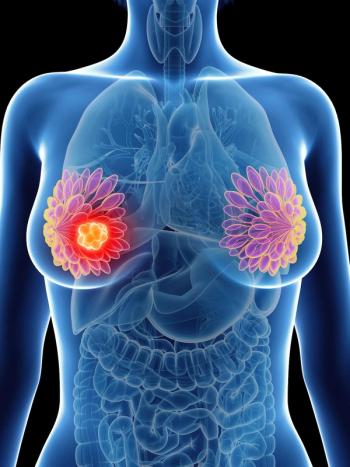
- ONCOLOGY Vol 12 No 8
- Volume 12
- Issue 8
Researchers Developing Less Toxic Therapy to Target Breast Cancer Cells
University of California, San Francisco, researchers have received approval from the National Cancer Institute (NCI) to develop a less toxic breast cancer therapy that may also prove to be more efficient at directly targeting cancer cells.
University of California, San Francisco, researchers have received approval from the National Cancer Institute (NCI) to develop a less toxic breast cancer therapy that may also prove to be more efficient at directly targeting cancer cells.
The UCSF team have found a way to combine liposomes with antibodies that can recognize and bind to cancer cells. The combination of the two, called immunoliposomes, has been compared to the "smart bombs" of the Gulf War in their ability to selectively target and kill cancer cells, while avoiding normal cells. "We have completed proof of concept studies and they have shown that this therapy cures tumors in mice," said John Park, MD, assistant adjunct professor of medicine.
By putting chemotherapy in liposomes and adding the targeting capability of a specially developed antibody, the drugs go directly to the cancer cells without causing more toxic side effects. "The antibodies bind to the cancer cell, enter it, and release the drugs inside," said Dr. Park.
Liposomes themselves were recently approved by the FDA for delivering drugs to patients with Kaposis sarcoma. They are also being evaluated in clinical trials in breast cancer.
Immunoliposomes May Be More Efficient Than Liposomes Alone
The addition of an antibody to liposomes represents a potential improvement of liposome technology, according to the UCSF team. The researchers have found that immunoliposomes, rather than liposomes, efficiently find and enter cancer cells, thereby increasing their effectiveness. The antibodies on these liposomes recognize the HER2/neu (erB2) protein on cancer cells.
"Were not just targeting the protein, but bringing a payload of chemotherapy to the cancer cells," Dr. Park said. The payload is the standard chemotherapy drug doxorubicin. Compared with infusions of chemotherapy alone, the doxorubicin-loaded anti-HER2/neu immunoliposomes are more effective at inhibiting tumor growth--including cures in mice--and cause fewer side effects, he added.
Articles in this issue
over 27 years ago
CD-ROM Helps Cancer Patients Ease the Painover 27 years ago
UT Southwestern and Komen Foundation Offer Breast Care Fellowshipover 27 years ago
Controversies in the Management of Stage I Seminomaover 27 years ago
Genetic Switch May Yield Map of Prostate Cancer Machineryover 27 years ago
Personalized Approach Increases Breast Cancer Screening RatesNewsletter
Stay up to date on recent advances in the multidisciplinary approach to cancer.


















































































